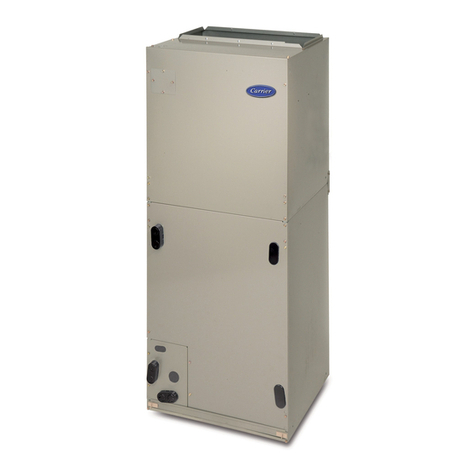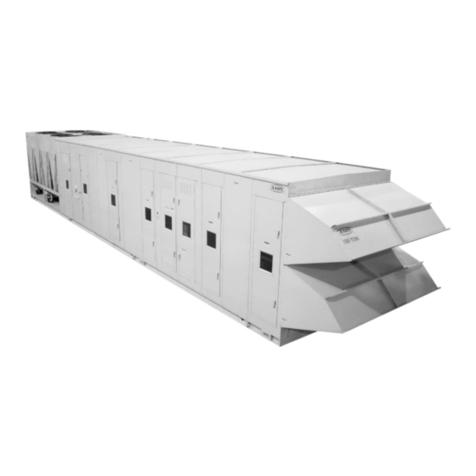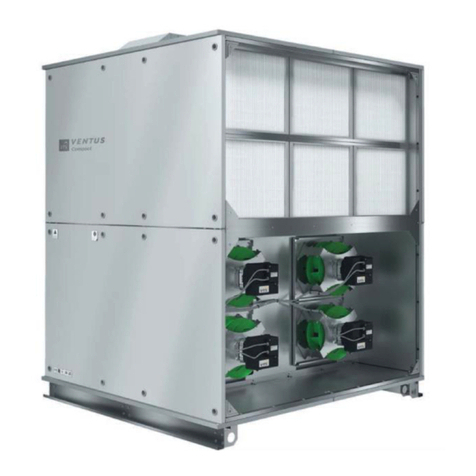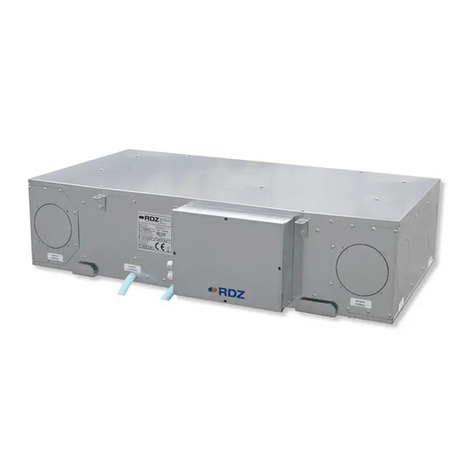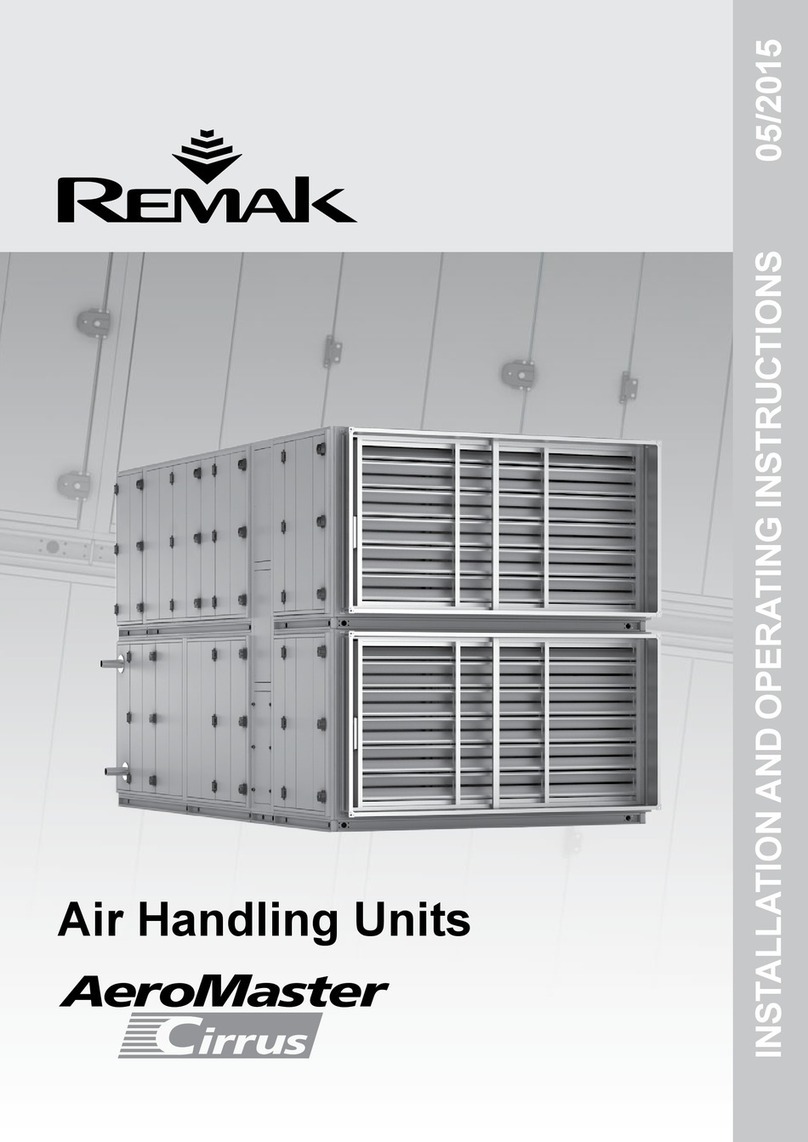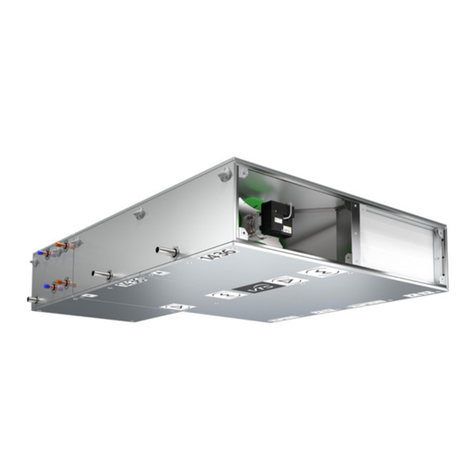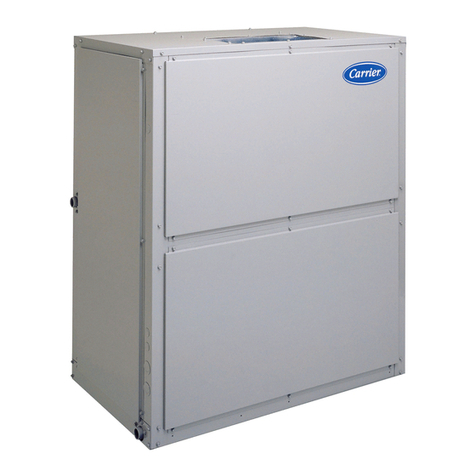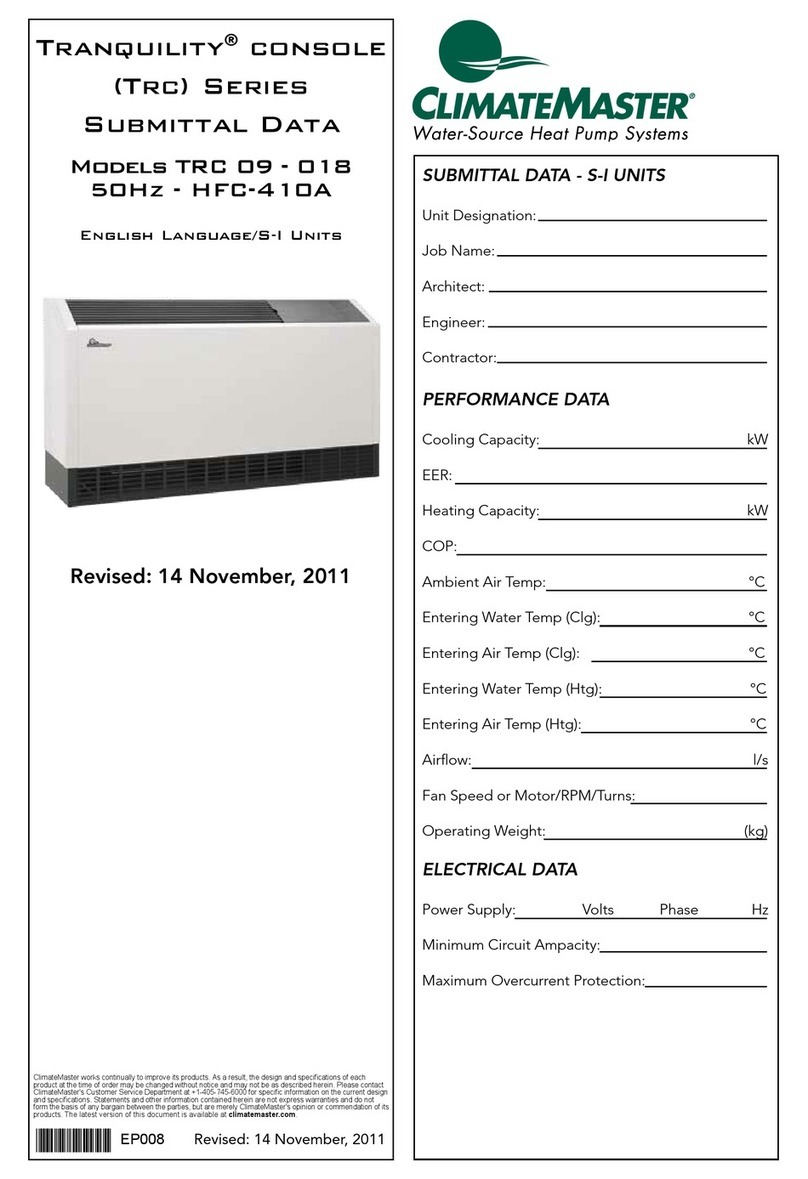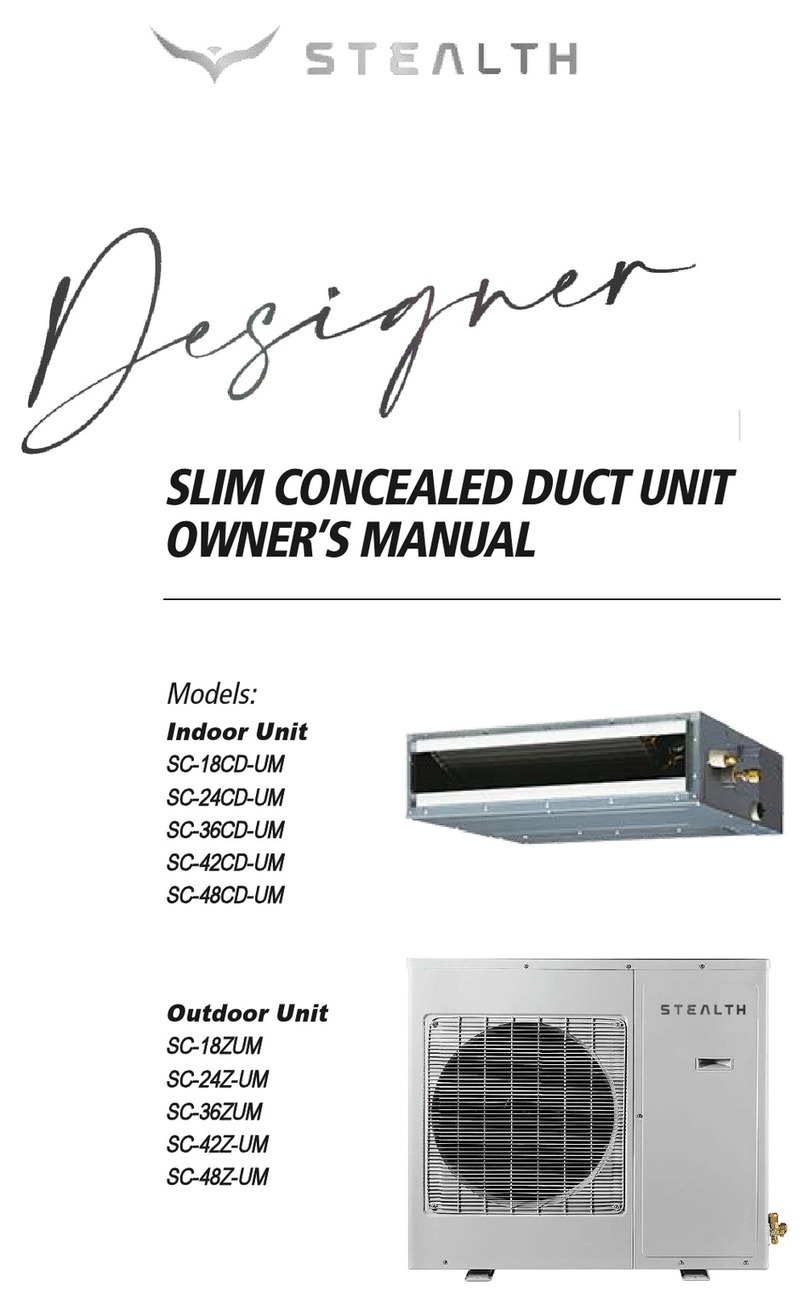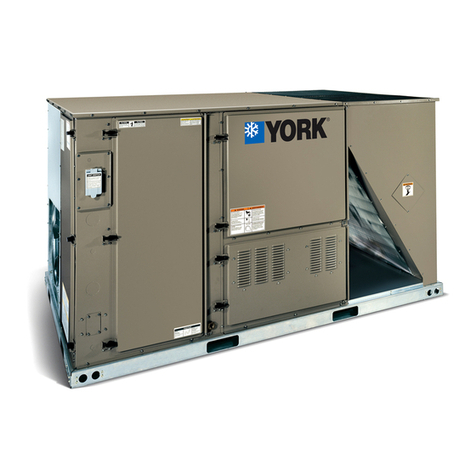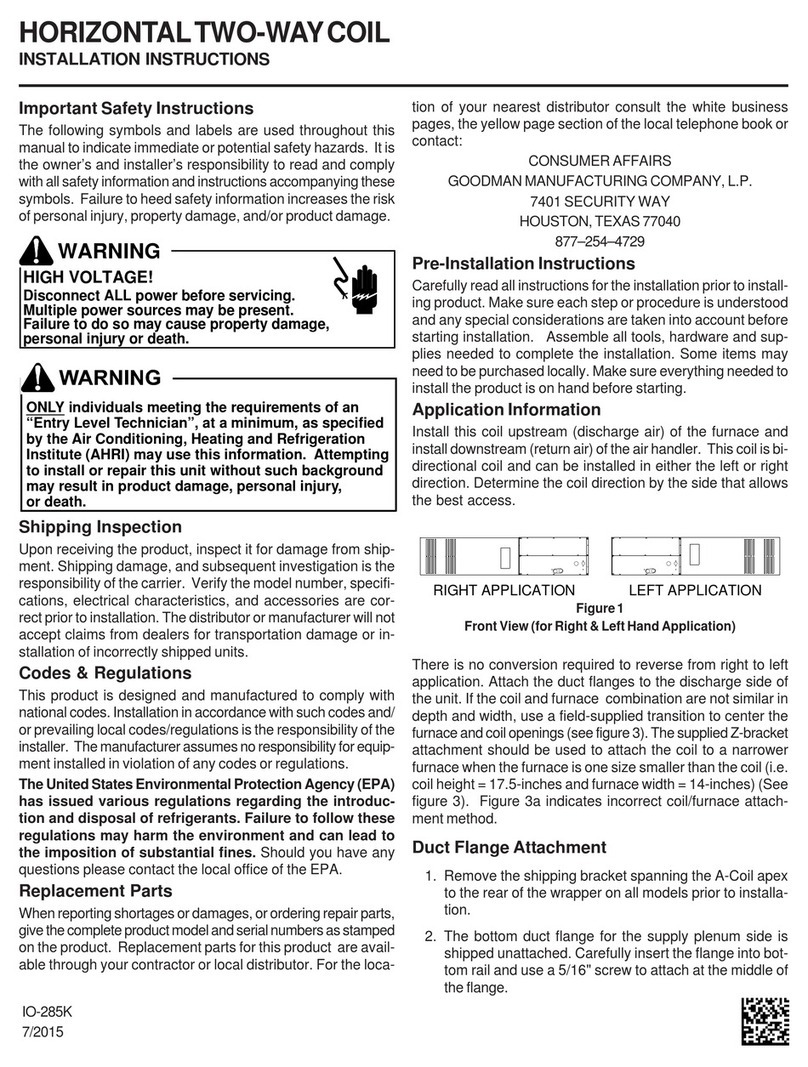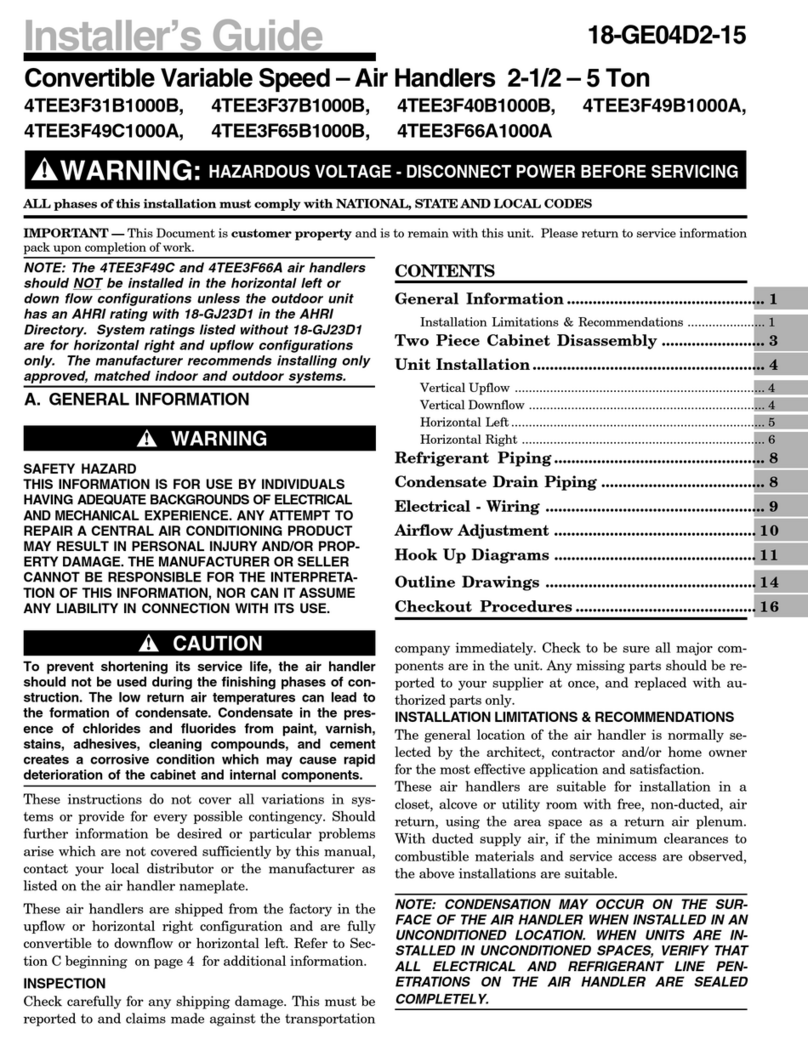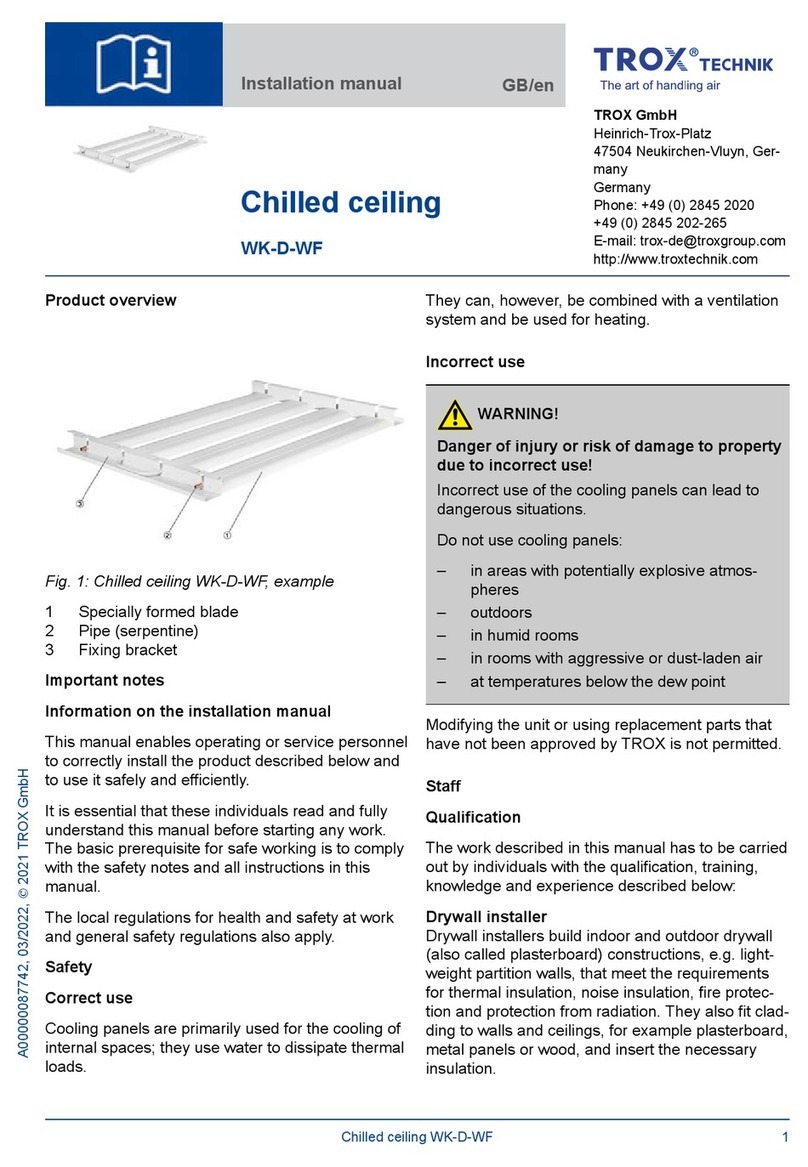
Supersedes:5-6-10 Date:1-24-24 EC-39MUINST
Engineered Comfort reserves the right to change any information concerning product or specification without notice or obligation.
Page 4 of 6
balancing technique may vary from one system to the next due
to these differences.
After establishing the proper system operation the appropriate
system operating conditions should be recorded for future reference.
Controls Operation
All other systems should be operating properly before the
controls function is tested.
Approved unit submittals, order acknowledgement, and other
manuals should be consulted for detailed information regarding
each individual unit and its controls. Care should be taken that
the correct control procedures have been identified for the unit
in question before any attempt is made to adjust the control
sequence. For specific information on controls provided by other
manufacturers contact the manufacturers local or national office.
This applies whether the controls are factory or field mounted.
Normal Operation & Periodic Maintenance
General
Each unit on a job will have it’s own unique operating environment
and conditions that will dictate the maintenance schedule for that
unit. A formal schedule and maintenance log and an individual
unit log should be established and maintained to establish max
performance and service life.
Information regarding safety precautions contained in the preface
at the beginning of this manual should be followed during any
service and maintenance operations.
Motor Blower Assembly
Nailor uses permanently lubricated ECM motors to ensure a long
trouble free blower life. However, should it become necessary,
the blower assemblies in these units are easily removable.
Before the blower assembly can be slid from the unit, the wiring
harnesses between the motor and the unit must be unplugged.
To remove the assembly, first remove the two sheet metal screws
securing the blower assembly. Next, slide the blower assembly
out the front of the unit. To reinstall the blower assembly repeat
the removal sequence in reverse order, making sure to reconnect
all wiring harnesses.
Dirt and dust should not be allowed to accumulate on the blower
wheel or housing. This can result in an unbalanced blower wheel
and damage the wheel or motor. The wheel can be cleaned
periodically with a vacuum cleaner and brush.
Maintenance Procedures
If fan motor does not run, do the following:
a. Check for free rotation of blower wheel. Make sure no foreign
objects are in fan. Look for signs of freight or job site damage.
c. Check power supply. Disconnects should be in the “ON”
position.
d. Optional fusing should also be inspected. Check transformer
for proper output.
e. Check for proper control signals and fan relay function.
Fan motor runs but emits excessive noise:
a. Maximum airflow may be too high, or discharge static
pressure may be incorrect.
b. Blower may have clearance problems. Make sure all
components are securely attached.
c. Verify integrity of ductwork. Leaks or loose connections
could cause noise. Check for rattling diffusers or rattling or
incorrectly adjusted balancing dampers.
Fan motor runs, but airflow too low:
a. May be due to ductwork restrictions, dirty air filters, or clogged
water coils.
b. Readjust fan speed control.
c. Discharge static pressure may be incorrect.
Coil
Coils may be cleaned by brushing the coil face with a soft brush.
The brush strokes should be in the direction of the fin never
across the fin. Cleaning with a vacuum cleaner should follow this.
If compressed air is available the coil may be cleaned by blowing
air through the coil from the leaving airside. Vacuuming should
follow this procedure also. Even coils that have the filter changed
on a regular basis still require cleaning periodically.
Electric Resistance Heater Assembly
Electric resistance heaters typically require no normal periodic
maintenance when unit air filters are changed properly. The two
most important operating conditions for an electric heater are,
proper air flow, and proper supply voltage. High supply voltage
or insufficient airflow will cause the heater strips to cycle on the
high side. The strip heaters are equipped with automatic reset
switches to prevent overheating of the unit. Once the switches
are tripped the heater will remain off until it cools past the lower
set point for the trip switches to reset. If the trip switches actuate,
the system should be checked and any problem found corrected.
Electrical Wiring and Controls
The electrical operation of each unit is determined by the
components and wiring of the unit and may vary from unit to unit.
The wiring diagram for the unit in question should be consulted
before attempting any repairs to the unit. When replacing any
component such as fuses, contactors, or relays, the exact type,
size and voltage should be used. All repair work must be done in
such a manner as to maintain the equipment in compliance with
governing codes and ordinances or testing agency listings. Any
deviation will void all factory warranty.
The integrity of all electrical components should be verified at
least twice during the first year of operation. Afterwards, all
controls should be inspected regularly for proper operation.
Valves and Piping
Valves and piping require no formal maintenance. Inspection
should be made for possible leaks during the course of normal
maintenance. Should a valve require replacement care should be
taken to keep the valve cool during the brazing process.
Filters, Throwaway
The throwaway filters used on a fan coil should be replaced
on a regular basis. A log should show the time between filter
changes so a maintenance schedule for changing the filters can
be established.
Drain
The drain should be checked for blockage at the initial start up of
the unit and every year at the beginning of the cooling season. If
clogging is discovered steps must be taken to clear it before the
unit is started.
Periodic checks should be made during the cooling season to
maintain free flowing condensate. Should algae and/or bacteria
be a concern a local air conditioning and refrigeration supply
organization familiar with local conditions should be consulted for
what chemicals are available to control these agents.






